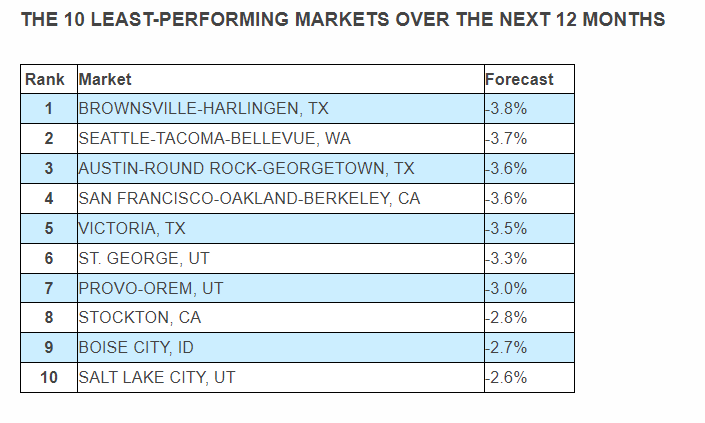 Veros Real Estate Solutions has released its 2023 Q2 VeroFORECAST that anticipates a strengthening housing market over the course of the next year.
Veros Real Estate Solutions has released its 2023 Q2 VeroFORECAST that anticipates a strengthening housing market over the course of the next year.
The study finds that home prices nationwide, on average, are anticipated to increase 1.7% over the next 12 months, compared to a flat forecast last quarter–signaling a possible light at the end of the tunnel.
While markets in the Western U.S., once considered the darlings of the real estate world, are displaying signs of weakness, the Midwest and Eastern regions of the nation have emerged as hotspots for homebuyers seeking both affordability and economic stability.
VeroFORECAST evaluates home prices in more than 300 of the nation’s largest housing markets, predicting home values based on an analysis of the fundamentals and interrelationships of numerous economic, housing, and geographic variables pertaining to home values.
“The housing market is trapped in a state of low supply, as many homeowners are keeping a tight grip on their rock-bottom mortgage rates,” found the report. “With the Federal Reserve pausing interest rate hikes due to receding inflation, mortgage rates are projected to hover around 6.5% to 7%. Some buyers have started to warm up to these rates and are returning to the market, driving prices higher. However, buyers are still seeking affordability.”
The report found that some Western markets, including San Francisco and Seattle, are still priced very high despite the recent decline. San Francisco is losing residents with job losses in the tech sector. Austin, Texas, and other former top-performing metros in Utah and Idaho are also expected to cool in the coming year.
Eastern and Midwestern cities including Rochester, New York; Lincoln, Nebraska; and Cincinnati have reported thriving economies with diverse industries, combined with a lower cost of living, thus making them attractive destinations for individuals and families looking to establish roots.
Veros found that other top-performing markets in the Eastern and Midwestern regions included North Carolina, Ohio, and Kansas. The 10 strongest performing markets in the country forecast over the next 12 months are expected to appreciate at the 5% to 6.5% level.

On the other end of the spectrum, Veros found that the 10 least-performing markets are expected to witness a modest depreciation of -2.5% to -4% over the next year. The report lists the three Texas markets of Austin, Brownsville, and Victoria; the expensive metro markets of Seattle and San Francisco; and the relocation destinations of the pandemic, including St. George, Provo-Orem, and Salt Lake City in Utah, as well as Boise, Idaho as markets where depreciation will rise the quickest. Stockton, California was found to complete the bottom 10 of the list. The rate of depreciation has softened for all 10 of these markets compared to Q1 of 2023, as supply has dwindled, and prospective buyers slowly return to the market.

The quarterly VeroFORECAST report is based on data from 327 Metropolitan Statistical Areas (MSAs), including 16,869 ZIP codes, 993 counties, and 82% of U.S. residents.
Click here for more information on the 2023 Q2 VeroFORECAST.

 theMReport.com Your trusted source for mortgage banking news
theMReport.com Your trusted source for mortgage banking news








